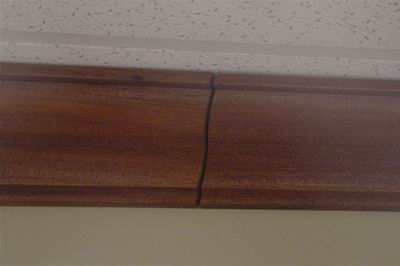Materials Cost as a Proportion of Cabinet Costs
There's no standard ratio of materials cost to other costs in cabinetmaking — it depends on many factors, and varies widely from job to job. April 10, 2008
Question
For a cabinet package only, installation not included, with no countertops, what is your typical ratio of costs to selling price – totaling all of your material costs including hardware, fasteners, etc.? How does that change when you outsource components like doors, drawer fronts, drawer boxes?
Forum Responses
(Cabinet Making Forum)
From contributor A:
There are really too many variables to give a general figure. Are you talking beaded inset face frames with BluMotion hardware? Are you talking 1/2" overlay doors with slab drawer fronts on epoxy coated 2/3 extension slides? Outsourcing does really change the equation, but without more information there is no way of knowing.
From the original questioner:
To contributor A: Why don't you give us a couple specific figures, based on your two examples of plain versus fancy?
The interesting thing about outsourcing fronts (doors, drawer fronts, and made-up-to-order face frames), is that the cost of the fronts for a frameless job is not much different from the cost of fronts for one done as inset with beaded frames.
If I say my uppers average 33 in height, and that on average, I have an upright (stile) in my face frame scheme every 20 inches, then each running foot of cabs, upper and lower taken together, has a total of about 9.2 square feet of fronts. With 1.5" as a face frame width, about 1.3 square feet of that 9.2 square feet is face frame, the rest being doors or drawer fronts. If it is frameless, just about all of the 9.2 is fronts.
Since the cost of my made-to-order beaded frames is at most a 20 percent premium versus my doors and drawer fronts (and even less if even just a little glitz is wanted), that area ratio makes the material cost question for frameless versus beaded inset, at least for the fronts part, a non-issue. And it should be the same if you scratch-build fronts from lumber. We're not talking about labor here, only material costs.
From contributor B:
Unless you build exactly the same cabinet every time there is absolutely no correlation between material costs and cabinet cost.
From contributor A:
I've never outsourced face frames, so I'm clueless about those costs. The ratio of material cost to selling price is totally dependent on how much I outsource. Material cost plus labor cost plus overhead and profit equals selling price. The more I outsource, the more I spend on material and the less my labor costs. My material cost might be roughly the same for a overlay and beaded inset job but the selling price will be vastly different. The ratio of material cost to selling price varies depending on the kind of job it is. Maybe I'm missing something in your question, but I don't know how you can take issue with what I've said.
From contributor C:
It would depend on door style, $1 material to $4.25 selling price, last kitchen.
From contributor D:
40% on average.
From contributor E:
Contributor B has it right. There is no solid ratio between material cost and cabinet selling price. The labor variations between styles and finishes are too great. There is no magic formula or easy number to punch in and get a selling price. For the last kitchen I did a few months ago, materials were 25% - $4,250.00 on 17k. No countertops, with beaded inset, hidden hinges, full extension Accuride, crown for cabinets and room, about 24 feet upper and lower combined. What that could possibly mean to you and your location and situation is anyone's guess.
From contributor F:
In answer to your question, it usually runs about 20-30 percent, So contributor E's figure is about right. As everyone else stated, variables in different designs will affect the final numbers. All of the guys I have dealt with over the last few years have been averaging these figures.
